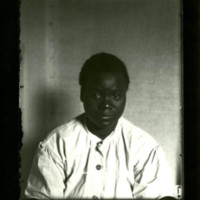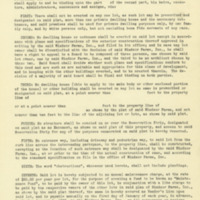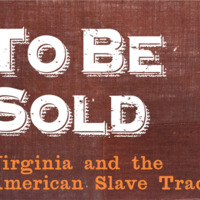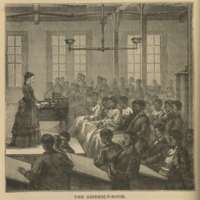Browse Exhibits (5 total)
Jefferson & The Capitol of Virginia
This is a web version of an exhibition at the Library of Virginia, Richmond, from January 7, 2002 through June 15, 2002 and at Colonial Williamsburg's DeWitt Wallace Decorative Arts Gallery from July 4, 2002 through February 17, 2003.
Forsaken: The Digital Bibliography

In his debut novel, Forsaken, Ross Howell Jr. tells the story of an uneducated African American servant, Virginia Christian, who was tried for killing her white employer in 1912.She died in the electric chair one day after her 17th birthday, the only female juvenile executed in Virginia since 1908. Howell researched the case using a variety of documents and images related to Christian's execution found in the Library of Virginia's collections. Forsaken: The Digital Bibliography spotlights the court records and newspaper stories used in each chapter of the novel: the coroner’s inquest for Ida V. Belote; Virginia Christian’s trial, appeal, and clemency records; and newspaper coverage of these events from the Newport News Times-Herald and Daily Press. As noted at the beginning of the novel, Forsaken is a work of fiction, but many of the characters were real people. Forsaken: The Digital Bibliography includes brief biographical sketches and documents related to these individuals. Also included is additional background material on other historic events referenced in the text, such as Nat Turner’s Rebellion and the “Allen Gang.” The epilogue focuses on what happened to the real-life main characters: Charles Mears, Harriet and Sadie Belote, Charles Pace, and others.
While by no means comprehensive (and very much a work in progress), Forsaken: The Digital Bibliography is intended to serve as a primary source companion piece to the novel.
Further Reading
Moten, Derryn. “A Gruesome Warning to Black Girls: The August 16, 1912, Execution of Virginia Christian.” Thesis (PhD), University of Iowa, 1997. The Library of Virginia has a copy on microfilm (Film 1497) that is available for in-library use only.
Vaughan, Charles. Grant Me to Live: The Execution of Virginia Christian. Pittsburgh: Dorrance Publishing Co., 2010.
Mapping Inequality

Where you live makes all the difference, but that difference has a history. The current circumstances of Richmond’s neighborhoods have roots in state and federal policies that have had lasting effects on concentrations of poverty and growth, lending patterns, homeownership, and educational outcomes for children. Neighborhoods that received a D grade in the 1950s now have a high concentration of federal housing subsidies and high levels of poverty. Children in these same neighborhoods score lower on SOL tests than their peers in neighborhoods with low poverty rates. During the foreclosure crisis, these neighborhoods featured high rates of default. We can use historic and current maps and data to better understand the connection between public policy and economic development in the Richmond region.
Mapping RVA: Where You Live Makes All the Difference is on display at the Library of Virginia from June 2 through August 23, 2014. It features contemporary maps by H.O.M.E. and historic maps from the LVA Collections.
To Be Sold: Virginia and the American Slave Trade

To Be Sold: Virginia and the American Slave Trade offers a frank exploration of Virginia’s role in the business of the second middle passage—the forced relocation of two-thirds of a million African Americans from the Upper South to the Cotton South in the decades before the Civil War. Anchoring the exhibition is a series of images created by English artist Eyre Crowe (1824–1910), who in March 1853 witnessed the proceedings of Richmond’s largest business. Crowe turned his sketches and experience into a series of remarkable paintings and engravings that humanized the enslaved and spoke eloquently of the pathos and upheaval of the trade. The story of the American slave trade is one of numbers, but it is also the story of individuals whose families were torn apart and whose lives were forever altered.
This is a beta version of the web site. Please check back periodically for updates.
Remaking Virginia: Transformation Through Emancipation

Marking the end of the 150th commemoration of the American Civil War, Remaking Virginia: Transformation through Emancipation explores how the end of slavery and emancipation affected every Virginian, forcing people to renegotiate and transform their relationships. Remaking Virginia focuses on how African Americans made the change from property to citizens and explores the societal transformation experienced by all Virginians through labor, church, education, families, political rights, military service, and violence.